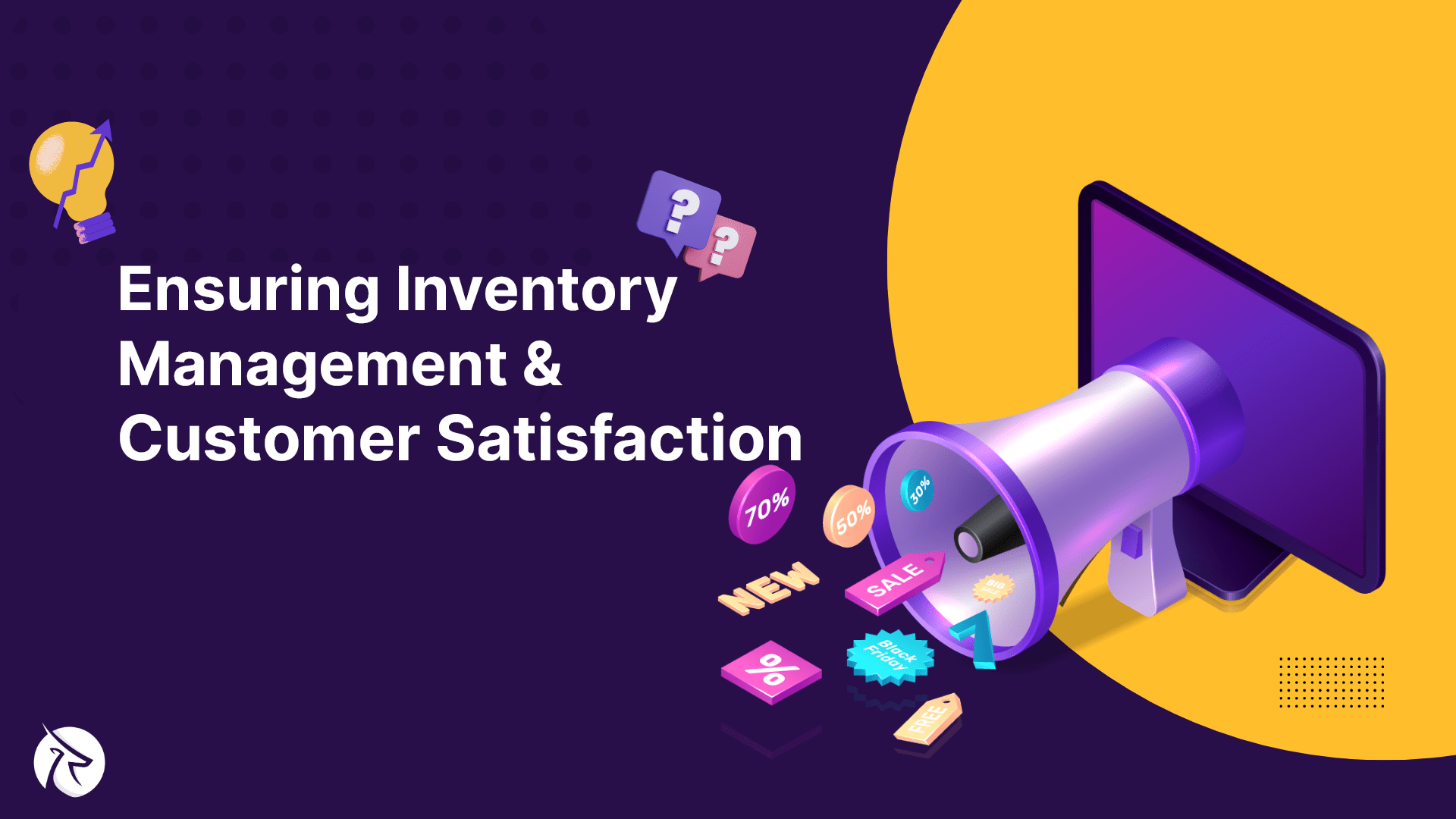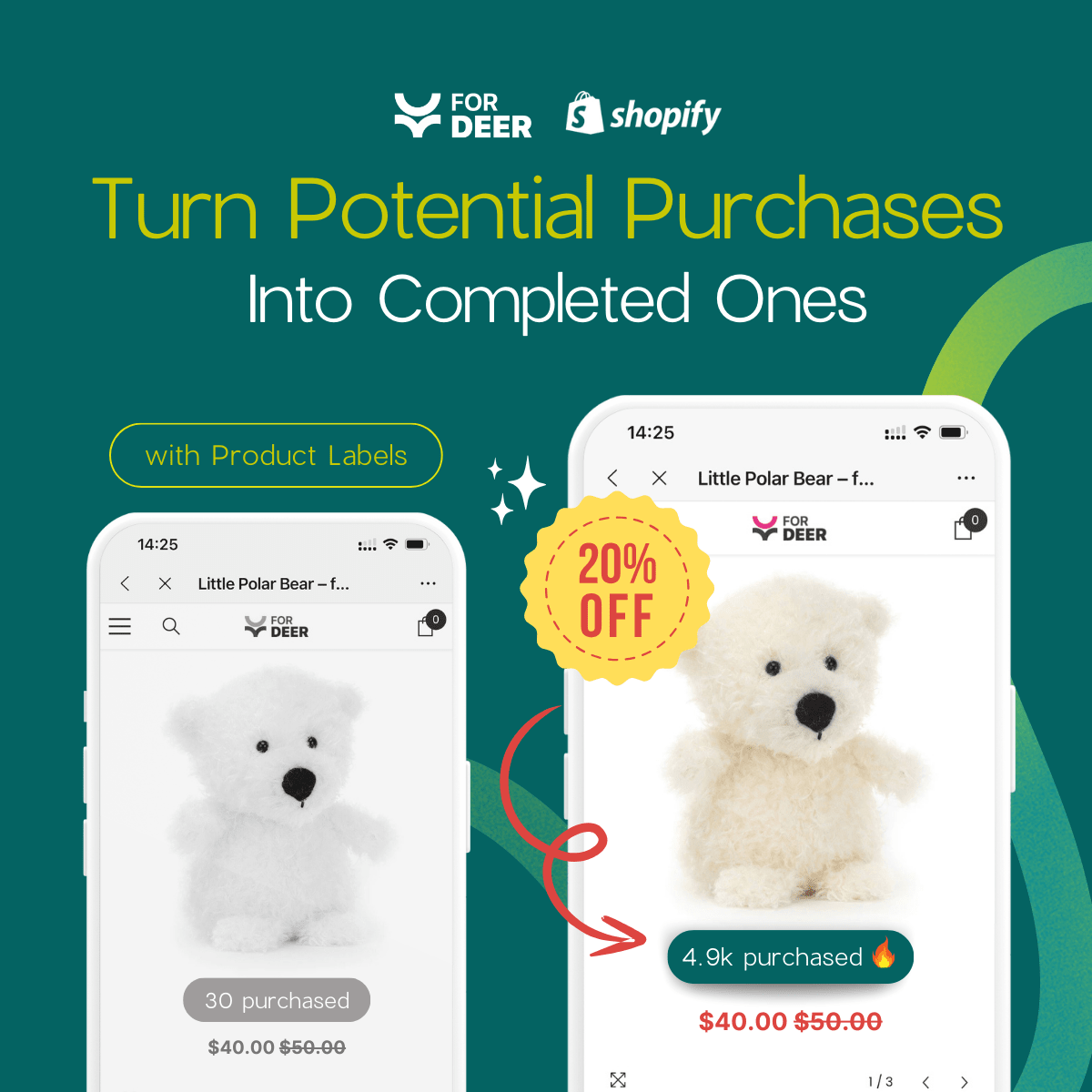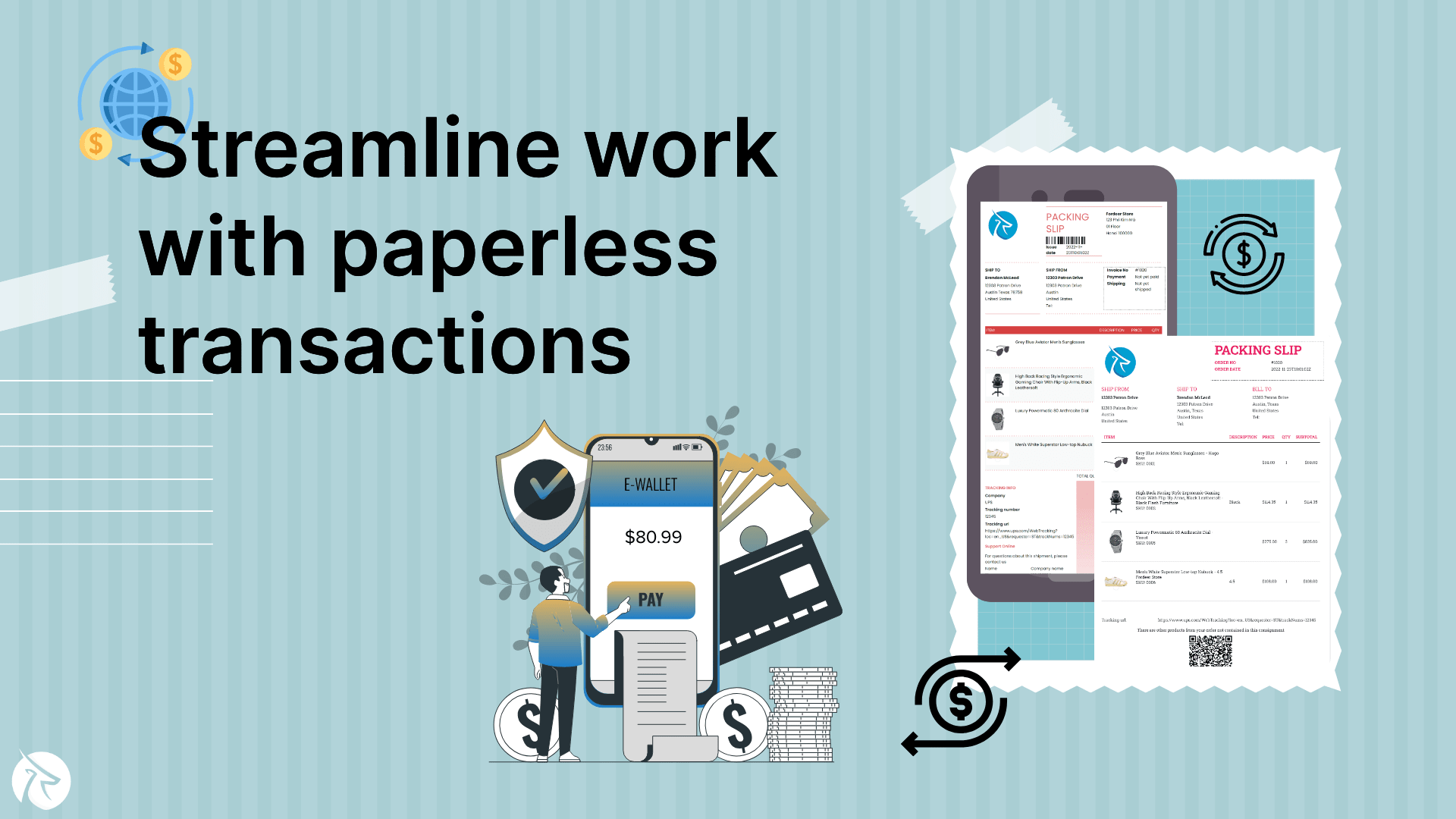Stock Alert Systems: Ensuring Inventory Management and Customer Satisfaction

In the intricate tapestry of e-commerce, where consumers wield unprecedented influence and choices abound, businesses navigate an unceasing quest to provide impeccable service, uphold brand reputation, and remain competitive. The secret to this multifaceted balancing act often lies within the walls of their inventory management systems.
Why do customers return to a business, time and time again? The answer invariably rests in the flawless orchestration of supply and demand. Customers expect products to be readily available when they want them, and stock outs or shipping delays are cardinal sins in the world of customer satisfaction.
This is where Stock Alert Systems step into the spotlight. Let's Fordeer discover how Stock Alert Systems shape the destiny of businesses, nurture customer relationships, and pave the path to success in the dynamic landscape of modern commerce.
Understanding Stock Alert Systems
Demystifying Stock Alert Systems: What Are They?
At its core, a Stock Alert System is a sophisticated tool designed to keep businesses in the know about their inventory levels in real-time. It operates as an automated sentinel, vigilantly monitoring stock levels and alerting relevant stakeholders when predefined thresholds are breached.
This means that when your most popular product is nearing depletion or a surplus is accumulating, you'll be the first to know. Stock Alert Systems act as the silent guardians of inventory, keeping a watchful eye on the ebb and flow of products as they traverse the supply chain.
Why Stock Alert Systems Matter
Preventing Stockouts and Overstocking: A stockout—when a product is unavailable when a customer wants it—can result in lost sales, diminished customer trust, and even brand erosion. Conversely, overstocking ties up capital in excess inventory, incurs storage costs, and may lead to product obsolescence.
Enhancing Customer Experience: The ultimate beneficiaries of a well-implemented Stock Alert System are the customers. When products are consistently available, orders are fulfilled promptly, and customers receive their desired items without delay.
Types of Stock Alert Systems
Real-Time Inventory Monitoring
IoT and RFID Technologies
One of the most revolutionary is the utilization of IoT (Internet of Things) and RFID (Radio-Frequency Identification) technologies. These cutting-edge systems employ interconnected sensors and RFID tags, which are attached to products, pallets, or storage units. As products move through the supply chain, these technologies continuously collect data, transmitting it to a central hub.
Barcode Scanning Systems
A slightly more traditional yet highly effective approach to real-time inventory monitoring is through barcode scanning systems. Products are affixed with barcodes that are scanned at various points in the supply chain, updating the inventory database in real time. When stock levels reach a predetermined level, the system triggers an alert.
Threshold-Based Alerts
Setting Optimal Reorder Points
These are the inventory levels at which replenishment orders are triggered. To set these points effectively, businesses must consider factors like lead times, sales velocity, and safety stock requirements. Once these points are established, Stock Alert Systems continuously monitor stock levels, issuing alerts when they approach or fall below these thresholds.
The Role of Forecasting in Alert Systems
Effective threshold-based alerts often rely on forecasting models. These models analyze historical data, including sales trends, seasonality, and market fluctuations, to predict future demand. By integrating forecasting into Stock Alert Systems, businesses can enhance the accuracy of their reorder points and minimize the chances of both stockouts and overstocking.
Demand-Driven Alerts
Customer Behavior Analysis
Demand-driven alerts are triggered by customer actions, such as website visits, product searches, and abandoned shopping carts. For instance, if a customer repeatedly views a particular product, the system may generate an alert to increase its stock level.
Seasonal and Trend-Based Alerts
Businesses often encounter fluctuations in demand due to seasons, holidays, or market trends. Stock Alert Systems equipped with seasonal and trend-based alert capabilities can anticipate these shifts.
Benefits of Implementing Stock Alert Systems
Boosting Customer Satisfaction
Meeting Customer Demand Consistently: By monitoring inventory levels in real time and issuing alerts when stocks run low, these systems empower businesses to replenish products before shortages occur.
Reducing Shipping Delays and Backorders: Shipping delays and backorders are common sources of customer frustration. Stock Alert Systems aid in minimizing these issues. When stock levels approach critical thresholds, alerts are triggered, prompting timely reorders or adjustments to production schedules.
Cost Efficiency in Inventory Management
Lower Holding Costs: Stock Alert Systems help businesses maintain optimal stock levels, reducing the need for excessive safety stock or buffer inventory. This, in turn, lowers holding costs, including warehousing expenses, insurance premiums, and capital tied up in inventory.
Minimizing Obsolete Inventory: By constantly monitoring inventory turnover rates and product shelf life, these systems can identify slow-moving or aging items. Alerts can then prompt actions such as discounts, promotions, or product phase-outs, preventing the accumulation of obsolete inventory.
Competitive Advantage
Outperforming Competitors in Inventory Management: With timely alerts and data-driven insights, businesses can stay ahead in anticipating market trends, adapting to changing customer preferences, and minimizing disruptions caused by inventory issues.
Shaping a Positive Brand Image: Customers appreciate reliability and are more likely to become repeat buyers and brand advocates when they experience hassle-free shopping. Stock Alert Systems enable businesses to shape a brand image associated with dependability and customer-centricity.
Choosing the Right Stock Alert System
Evaluating Your Business Needs
Selecting the right Stock Alert System is a pivotal decision that should align closely with your business's unique requirements. To make an informed choice, here are 2 things that you need to consider:
- Beginning by thoroughly evaluating your specific needs.
- Considering factors such as the size of your operation, the diversity of your product catalog, your sales volume, and the complexity of your supply chain.
By gaining a comprehensive understanding of your business needs, you can narrow down your options and focus on Stock Alert Systems that are the best fit.
Features to Look for in a Stock Alert System
When embarking on the quest to find the ideal Stock Alert System, several key features should be on your radar. These features can significantly impact the effectiveness and suitability of the system for your business.
Scalability: A scalable Stock Alert System is crucial to accommodate your evolving requirements. Scalability ensures that your chosen solution remains viable and cost-effective in the long term so keep in mind to look for a system that can seamlessly adapt to increased product volumes, expanding sales channels, and changing market dynamics.
Integration Capabilities: Stock Alert System you choose should offer robust integration capabilities and seamlessly connect with your existing software and systems, such as your e-commerce platform, point-of-sale (POS) system, and accounting software.
User-Friendly Interface: A well-designed user interface streamlines the monitoring of stock levels, the customization of alert thresholds, and the generation of reports. When your team can interact effortlessly with the system, you'll maximize its utility and minimize the learning curve.
Measuring the Impact
Key Performance Indicators (KPIs) for Stock Alert Systems
Implementing a Stock Alert System is a strategic move, and like any business initiative, it's essential to measure its impact and effectiveness. To gauge the success of your Stock Alert System, you can track several Key Performance Indicators (KPIs) that provide insights into your inventory management and customer satisfaction.
Inventory Turnover Rate: Inventory turnover rate measures how quickly your products move through your warehouse and off your shelves. A higher turnover rate indicates that your stock is moving efficiently, reducing holding costs and the risk of obsolete inventory.
Fill Rate: Fill rate measures your ability to fulfill customer orders completely and on time. A high fill rate indicates that you're meeting customer demand consistently, which can lead to increased customer satisfaction and loyalty.
Customer Satisfaction Surveys: Direct feedback from your customers is invaluable in assessing the impact of your Stock Alert System on their experience. The insights gleaned from these surveys can highlight areas where your Stock Alert System has made a positive impact and areas that may require further optimization.
Real-World Success Stories: Companies Benefiting from Stock Alert Systems
Real-World Success Stories: Companies Benefiting from Stock Alert Systems
Amazon, one of the world's largest e-commerce giants, has significantly benefited from the implementation of a sophisticated Stock Alert System. With its vast and diverse product catalog, Amazon faced challenges related to inventory management and customer satisfaction.
By leveraging advanced analytics and real-time monitoring, Amazon's Stock Alert System enables them to:
- Set precise reorder points for each product, taking into account historical demand patterns, seasonality, and market trends.
- Receive immediate alerts when stock levels approach critical thresholds or when an unexpected surge in demand occurs.
- Automate reorder processes and restocking, ensuring that popular products are consistently available to customers.
As a result of this proactive approach to inventory management, Amazon has been able to:
- Virtually eliminate stockouts for popular items, which has significantly improved customer satisfaction.
- Optimize their supply chain, reducing excess inventory and holding costs.
- Enhance their reputation for reliability and timely deliveries.
Future Trends in Stock Alert Systems
As technology continues to advance, Stock Alert Systems are poised to undergo significant transformations, shaping the landscape of inventory management and customer satisfaction. Here are some compelling future trends to watch for:
AI and Machine Learning Integration
The integration of Artificial Intelligence (AI) and Machine Learning (ML) into Stock Alert Systems is set to revolutionize inventory management. AI-driven algorithms can analyze vast amounts of historical data, customer behavior, and market trends to make highly accurate predictions about future demand. These systems can:
- Automatically adjust reorder points and quantities based on real-time factors like changing customer preferences or unexpected disruptions in the supply chain.
- Identify patterns and anomalies in inventory data, helping businesses proactively address potential issues before they impact operations.
- Improve the accuracy of demand forecasting, reducing instances of overstocking and stockouts.
Predictive Analytics for Inventory Management
The future of Stock Alert Systems lies in predictive analytics, which goes beyond merely alerting when stock levels are low. Predictive analytics takes a proactive approach by anticipating inventory needs based on historical data and predictive models. It offers several advantages:
- Preemptively identifying potential supply chain disruptions or fluctuations in demand.
- Streamlining the procurement process by automating order placements with suppliers, optimizing lead times.
- Providing deeper insights into customer preferences, allowing businesses to tailor their offerings more effectively.
Enhancing Customer Engagement through Personalization
Stock Alert Systems are increasingly being used to enhance customer engagement by personalizing alerts and recommendations. This trend involves tailoring stock alerts and product recommendations based on individual customer preferences and behavior. Here's how it works:
- Stock alerts are sent to customers when products they've shown interest in (e.g., added to a wishlist or cart) are back in stock.
- Product recommendations are dynamically adjusted based on a customer's browsing and purchase history, increasing the likelihood of relevant cross-sells and upsells.
Come to an end
In this exploration of Stock Alert Systems, we've unveiled their pivotal role in modern inventory management and customer satisfaction. These systems have evolved from basic alerts to sophisticated tools that empower businesses to streamline operations, reduce costs, and enhance customer experiences.
As we move forward, the importance of Stock Alert Systems will continue to grow, making them a cornerstone of successful businesses in the digital age.
For more invaluable information, stay updated with Fordeer Team!
- Install Fordeer Apps for Free
- Get immediate assistance by chatting with us.
- Join Fordeer Commerce Community for fresh app updates, expert tips, and private deals.











